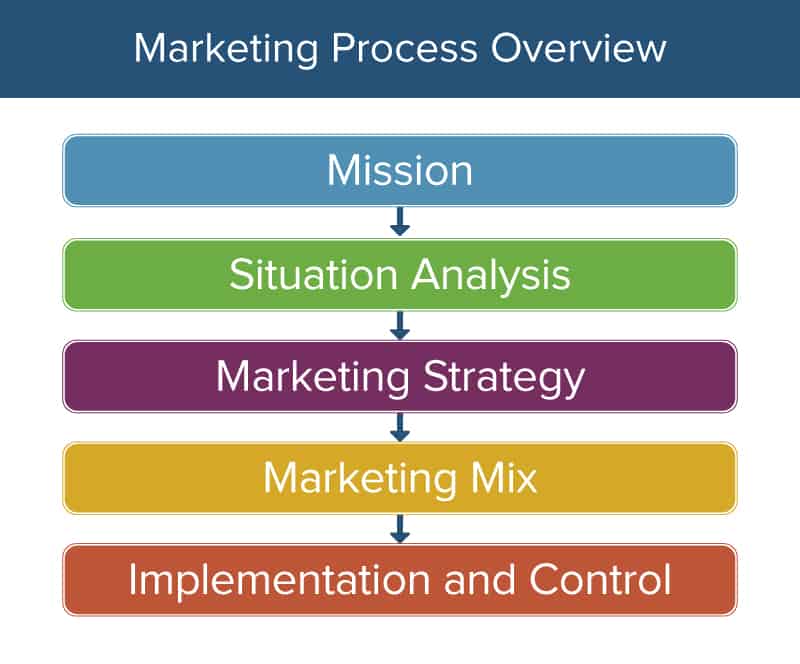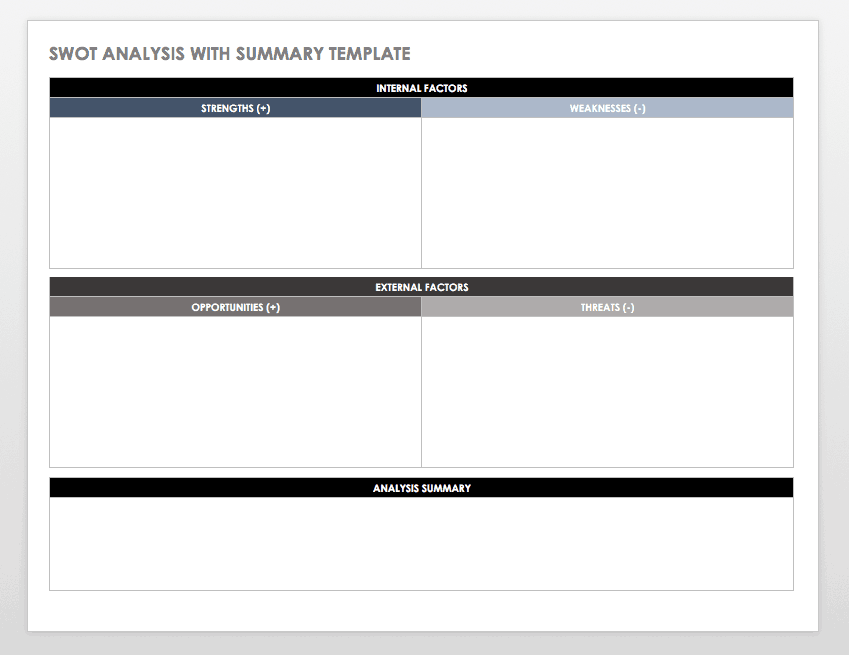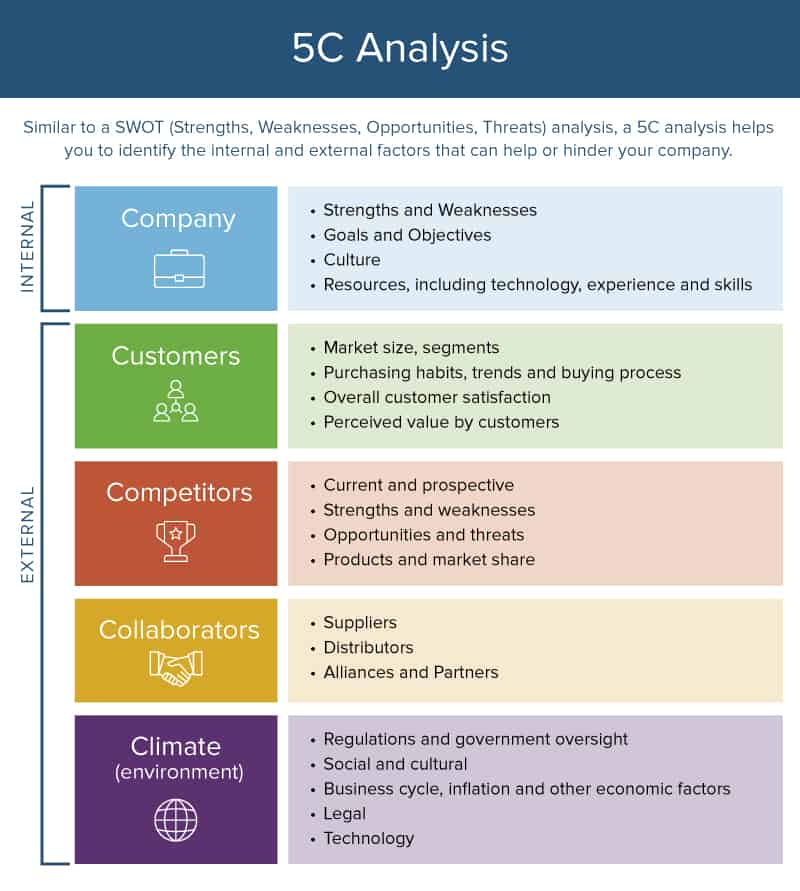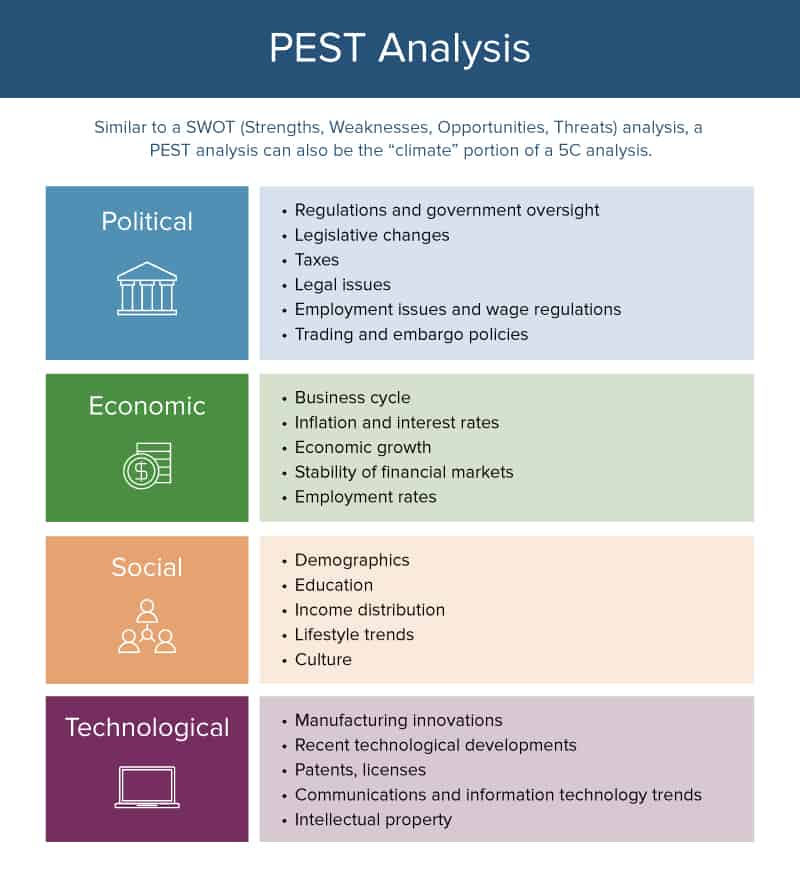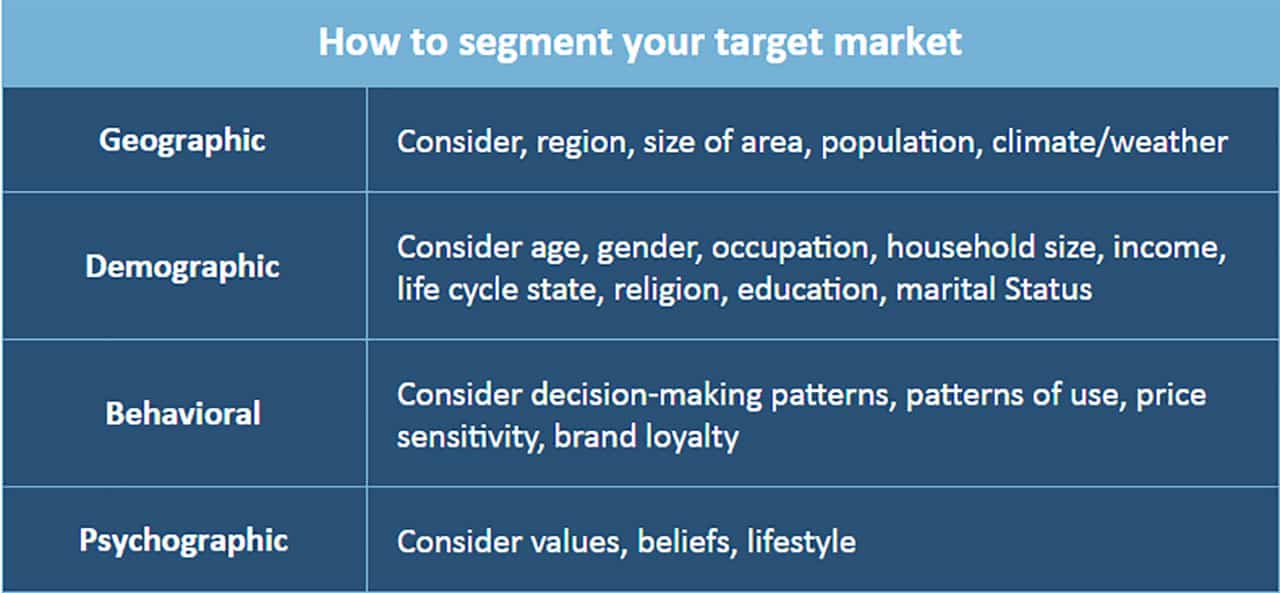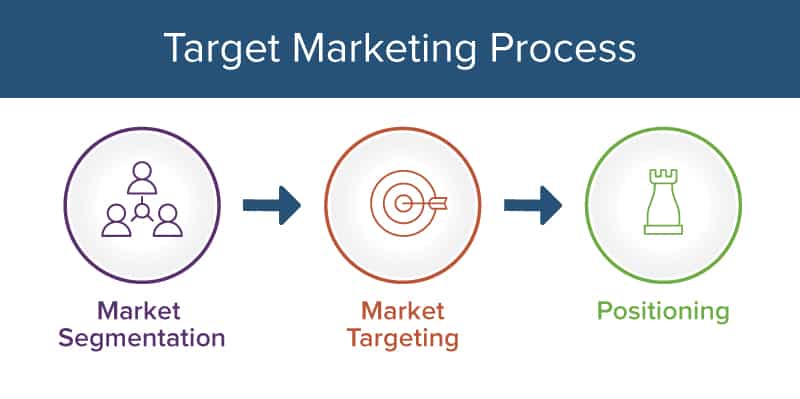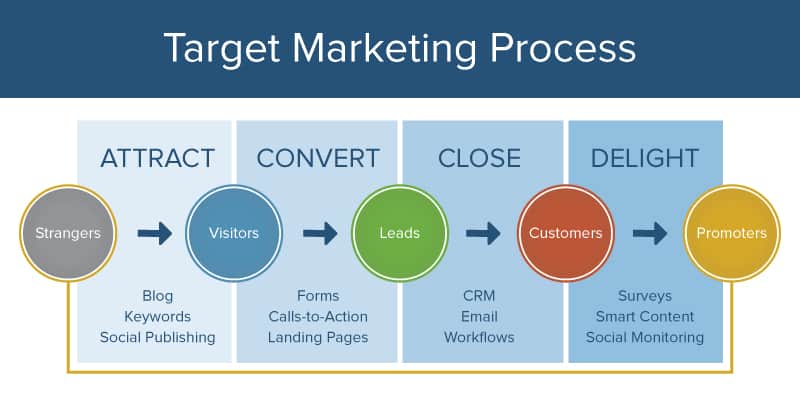5 Essential Steps for a Successful Strategic Marketing Process
The strategic marketing process is a deliberate series of steps to help you identify and reach your goals. Even more, you’ll discover what your customers want and develop products that meet those needs. Here are the steps to a successful strategic marketing process.
- Mission
- Situation Analysis
- Marketing Strategy/Planning
- Marketing Mix
- Implementation and Control
Strategic marketing planning involves setting goals and objectives, analyzing internal and external business factors, product planning, implementation, and tracking your progress. Consider the example of Apple, winner of the CMO Survey Award for Marketing Excellence for the past seven years. Here’s an example of the strategic marketing plan for one of the most successful companies in the world.
Mission: Apple is dedicated to making innovative, high-quality products.
Situation Analysis: Apple’s competitive advantage is driven by its commitment to understanding customer needs, focusing on the products that are core to its mission, and fostering a collaborative work culture.
Marketing Strategy: Apple usually is first to the marketplace with new products and the company relies on brand loyalty from existing customers as a strategy when launching new products and services.
Marketing Mix: While Apple offers a range of products, it values premium pricing and relies on strict guidelines for distribution.
Implementation and Control: Each Apple product complements the others and work within the same ecosystem, so customers tend to stay with the brand, creating loyal consumers.
The strategic marketing process puts all the pieces together so that everything you do contributes to the success of your business. Rather than executing haphazard activities and ideas, developing a solid plan that weaves goals and tactics into a seamless experience is essential. You can follow these steps to create products and services that will delight your customers and beat out your competitors.
Step One: Mission
First, identify and understand the company’s mission. Maybe it’s written down and promoted throughout the organization. If not, talk to stakeholders to find out why your company exists. A mission statement explains why a company is in business and how it can benefit consumers. Sometimes, the mission statement is aspirational, motivating staff and inspiring customers. Or it is simply a straightforward statement about who you are. Either way, you can’t plan a marketing strategy without knowing clearly what business you are in and why.
Here are some example mission statements:
Citigroup: Our goal for Citigroup is to be the most respected global financial services company. Like any other public company, we’re obligated to deliver profits and growth to our shareholders. Of equal importance is to deliver those profits and generate growth responsibly.
IKEA: At IKEA, our vision is to create a better everyday life for many people. Our business idea supports this vision by offering a wide range of well-designed, functional home furnishing products at prices so low that as many people as possible will be able to afford them.
Universal Health Services: To provide superior quality healthcare services that: PATIENTS recommend to family and friends, PHYSICIANS prefer for their patients, PURCHASERS select for their clients, EMPLOYEES are proud of, and INVESTORS seek for long-term returns.
Unlike the other steps in the planning process, senior leaders or the board of directors typically develop the mission statement and corporate objectives. Your role is to identify those objectives in the planning process to ensure that your efforts stay aligned with corporate leadership.
The mission statement is a core message that guides and influences your marketing strategy. Questions to ask when evaluating the mission:
- Why is your company in business?
- What is the purpose of your business?
- What is the strategic influence for your business?
- What is the desired public perception for your business?
- How does your mission statement clarify your strategy?
- How does your mission statement unify your team?
Step Two: Situation Analysis
The second step of the strategic marketing process is to evaluate internal and external factors that affect your business and market. Your analysis will illuminate your strengths and the challenges you face — either with internal resources or with external competition in the marketplace. Situation analysis provides a clear, objective view of the health of your business, your current and prospective customers, industry trends, and your company’s position in the marketplace.
There are several methods to conduct this analysis. A typical analysis is called a SWOT analysis: strengths, weaknesses, opportunities, and threats.
Strengths and weaknesses are internal factors, under your company’s control. What do you do well? What needs to be better? Opportunities and threats are external factors, such as interest rates or a new competitor in the market. Here are some questions that can help you identify internal and external factors:
- Strengths: What do you do well? What are the factors that you control? What is your competitive advantage? How are your products and services superior to others in the marketplace?
- Weakness: Where are you underperforming? What is limiting your ability to succeed? Where do limited resources affect your success?
- Opportunities: What are untapped markets? Where is the potential for new business? Can you take advantage of any market trends?
- Threats: What are the obstacles? Which external factors (political, technological, economic) can cause a problem?
Download SWOT Analysis Template With Summary
A 5C analysis (Company, Customers, Competitors, Collaborators, Climate) is another way to evaluate the market environment. Like SWOT, it includes an internal analysis as well as an exploration of external factors.
Here are some questions you can ask when working on a 5C analysis:
- Company: How successful are your product lines? What is your image in the marketplace? How effectively are you achieving your goals? How does your company’s culture affect your performance?
- Customers: Who is your audience and what is the market size? How much is your customer base growing? What motivates customers to buy your product or service? What are overall sales trends and how is the buying process changing?
- Competitors: Who are your direct, indirect, and future competitors? What are their products and market shares? How are they positioned in the market? What are their strengths and weaknesses?
- Collaborators: Who are your suppliers, distributors, partners, and agencies? How can they help you grow your business? How does the stability of their business affect the success of your business?
- Climate: What are the governmental policies and regulations that affect the market? What economic factors (inflation, interest rates) are at play? What trends influence your customers? What is the impact of technology on the demand for your product or how could technology give you an advantage over your competitors?
Download 5C Analysis Template
You can also conduct a PEST analysis (Political, Economic, Social, Technological), which is similar to the climate section of a 5C analysis. This method provides a comprehensive analysis of external factors that could affect your company.
Here are some questions you can ask when performing a PEST analysis:
- Political: What laws and regulators affect consumers? What’s the impact of trade regulations, employment laws, and tax guidelines? How stable are the foreign markets and countries in which you sell products, contract with suppliers, or offer services?
- Economic: How do interest rates, inflation, taxes, and exchange rates affect your customers and your bottom line? What is the impact of the stock market on your business? What are the local business cycles and overall economic growth?
- Social: What lifestyles and attitudes affect the buying habits of your consumers? What are the demographics of your customers (age, gender, education, etc.)? How are they changing?
- Technical: What patents, innovations and licenses can influence your company? Which manufacturing trends can increase your production levels or drive down costs? How can information technology help or hurt your product placement, positioning, and promotion?
Download PEST Analysis Template
Your analysis, no matter which method you use, will help you list the most critical problems and relevant opportunities, as well as show you how well your company can tackle projects. Once you have a clear picture of your business, you can identify potential markets and products.
Step Three: Marketing Plan
Now that you’ve identified opportunities through your analysis, you should prioritize and map out which ones you are going to pursue. Writing a marketing plan will specify your target customers and how you will reach them, and should also include a forecast of the anticipated results. These questions can help:
- How will customers respond to your marketing efforts?
- How much will the plan cost?
- How will your competition respond?
The data from your market research and situation analysis will help you build these projections into your plan.
Define Your Target Audience
Few companies can meet the needs and wants of the entire market. You want to split the market into a segment that aligns best with your strengths and opportunities. Your goal is to identify customers. You can select your target market by choosing all kinds of characteristics, behaviors, and demographics. The important thing is to make sure the audience is clearly defined and large enough to support your product or service.
Even though you may have some information about your customers based on your situation analysis, you may need to conduct more research on their needs and wants. With research, you can create detailed profiles or personas of your ideal customers. The more you know about your target audience, the more effectively you can offer them value through your product or service. Nothing matters more than how you make customers feel about your company.
Set Measurable Goals
How will you know if your plan succeeds? You need specific, measurable goals with milestones that measure your progress. Do you want to increase your sales? The goal you set should specify how much you want to grow the sales number, and the timeframe for meeting that target. Each goal should be actionable and attainable through tactics you control. At this stage, avoid contingent goals, which are dependent on circumstances beyond your control. With each goal, list the tactics or steps you will take to achieve it. Combine simple, clear, and precise goals (whether it’s gaining customers, improving brand recognition or something else) with a detailed plan that defines the tactics to meet your goal. For more information on writing SMART (Specific, Measurable, Achievable, Relevant, Time-Bound) goals, read this article.
Identify and Set a Marketing Budget
Now it’s time to allocate the resources that will turn your plan into action. Your budget will outline all the expected costs for implementing your marketing plan, including advertising, online content, branding, public relations, staffing costs, and more. Depending on the size of your budget, you may have to make some tough choices about which goals and tactics are the top priorities. Or you may have to adjust your tactics until you reach a budget that’s affordable. By creating the budget, you can finalize and stick to your plan. For more help with marketing budgets, read 12 Free Marketing Budget Templates.
Step Four: Developing Marketing Mix Decisions
At this stage of the strategic marketing process, it’s time to focus on the “how” of planning. Your marketing mix is based on the 4Ps of marketing, including Product, Price, Promotion, and Place. In 1960, E. J. McCarthy first expressed the 4Ps, and it is probably the best-known way to describe the marketing mix. The 4Ps will guide the way you convey the value of your product to your customers. You are positioning your product and its competitive advantage. You need to be clear about what you are marketing: convenience or quality? And you need to know who is likely to buy your product or service.
By using the market research conducted in step two, you can develop the ideal marketing mix for your target audience and the type of product or service you sell. Although there are dozens of marketing channels, you will want to choose the tactics that will reach your prospects when they’ll be most receptive to your message.
Product: A product is a good or service that meets the needs of your target market. Even more, products solve problems. Whether you are developing a marketing plan for Coca-Cola, a luxury hotel, or a cell phone, you have to know what problem it solves and why your product is a unique solution. Make sure you have a clear understanding of all the details of your product, including its features, branding, and packaging.
- What is the product or service?
- What does the customer want from it?
- What needs does it satisfy?
- What features does it have to meet these needs?
- How and where will the customer use it?
- How does it compare with similar products?
- Who are the competitors?
Price: The price is the amount of money your target market is willing to pay for your product. Factors for price include any discounts, payment periods, and list price, as well as how much it costs your company to produce the product. You also need to consider overall marketplace conditions and your competition. How healthy is the economy? How much are your competitors charging for a similar product? Do they have the same business model?
The marketing message around your price depends on your market and your audience. Maybe it’s a way to position your product in a crowded marketplace. It might be a competitive advantage or a way of demonstrating the value of your product.
- What is the value of the product to the customer?
- Are there existing price points for similar products? If so, what are they?
- Will a small decrease give you extra market share? How much will that affect the product’s perceived value?
- Will discounts to certain market segments be part of your strategy?
Promotion: The way you communicate with your target audience about the value and benefit of your product is promotion. Think of promotion as an opportunity to educate your customers about your products and services. You teach them the value of what you offer and how your product meets their needs or solves their problem. There are countless ways to educate them through marketing channels including direct marketing, paid search and social, advertising, public relations, and sales promotions that create brand awareness. This extends to almost every aspect of how you present the product to your target market, and is everything that teaches your audience about your product or brand.
- Where can you get your marketing messages across to your target market? Options include advertising on TV and billboards, direct marketing, public relations, sponsored events, and promotions. Consider the details you used when segmenting your audience.
- What marketing channels does your target market use on a regular basis? Where and when are they most ready to buy your product?
- When is the best time to promote?
- How do your competitors do their promotions?
Place: Consider place as product distribution or how you plan to get your product to your customers and make the buying process easy. Place includes distribution channels, outlets, and transportation to get the product to the target market.
- Where do customers look for your product? In a store? Online? Through a catalogue?
- Do you need a sales force to reach customers or should you sell directly to your target market?
- What are the best distribution channels?
- Where are your competitors reaching customers?
What Is the Definition of Strategic Marketing?
A marketing plan establishes the goals and tactics of every marketing campaign. It keeps everyone in your organization on the same page about the direction and purpose of your marketing efforts. A marketing plan also provides a way for you to measure your success. Without a plan, you won’t really know whether you’re succeeding.
While every individual campaign should have a plan, your company also needs a strategic marketing plan to guide your overall efforts. A strategic plan identifies your business goals, the marketplace in which you compete, your target audience, the ways you want to reach them, and how you will evaluate your success. It integrates everything you say and do to grow your company. A strategic marketing plan is not a static document that gets tossed in a drawer once it’s written. Instead, a plan is a living document that guides your work and is regularly updated to reflect changes in your business, your customers, and your competition.
The process of developing a strategic marketing plan is crucial to your business. You cannot create strategic marketing without strategic thinking. This planning helps you clarify your goals and identify where you see your business in the future, which ultimately strengthens your strategy. A strategic marketing planning process also helps with:
- Providing a clear map of your company’s goals and how to achieve them.
- Getting all stakeholders to share a common goal and a have a common understanding of your company’s opportunities and challenges.
- Identifying and meeting customer needs with the right products in the right places.
- Growing your market share and product lines, leading to more revenue.
- Enabling smaller companies to compete with bigger firms.
One caution: A strategic marketing plan focuses on your goals for your products and customers. The overall business plan, which outlines all of your company’s goals, should support the marketing plan. If they don’t work together, neither plan will succeed.
What Problems Should You Anticipate in the Strategic Marketing Process
Every manager knows to expect the best but plan for the worst. In the marketing planning process, here are some challenges you may face:
- Confusing Strategy with Tactics: A strategic marketing plan outlines your larger goal. Sometimes, this can be confused with a tactical marketing plan. The difference between the two is that the strategy identifies your goals and objectives and the tactical marketing plan outlines the details for how you’ll reach those goals. Your strategy may be a larger goal, such as increasing your market share. Tactics are the action steps, such as lowering your prices, so more people buy your product. A successful plan needs both, implemented at the proper stage of the process.
- Lack of Resources: Maybe your goal is to increase sales, but you don’t have the workforce to meet all the incoming orders. Perhaps you don’t have the resources to hire experienced people who can adequately staff the marketing pipeline. The strategic planning process will help you identify the resources you have and the best way to put them to work for the good of the company.
- Assumptions About Your Customers: Market research can help you identify your target audience. Sometimes the audience changes, and your planning process should include steps for adjusting to the evolving tastes of consumers.
How Do Specific Marketing Processes Work?
The steps of the strategic marketing process (mission, situation analysis, marketing plan, marketing mix, and implementation and control) are different than the process for a specific marketing effort. Specific efforts may support one goal or business line, but the strategic process supports the entire mission of your organization.
Target Marketing Process
Target marketing identifies the specific market segments that will help your business grow. The three main activities of target marketing are segmenting, targeting, and positioning. Organizations use this S-T-P approach to pinpoint the best prospective customers.
- Segmenting: Segmenting divides the overall market into smaller groups based on demographics, geography, lifestyle or behavioral approaches.
- Targeting: Choose the segment of potential customers that offers the most business opportunity for you.
- Positioning: The final step is to position your product in a way that will appeal to the needs of your target audience and encourage them to buy your product.
Content Marketing Process
Content marketers generate demand for a product by generating a steady flow of content that focuses on the problems and desires of potential and current customers. Here are the five steps of the content marketing process:
- Plan: Develop a plan that specifies the details of creating, publishing, distributing, and measuring a content marketing program.
- Create: Take key ideas and themes, and turn them into raw material.
- Publish: Turn raw material into various kinds of content assets, including articles, blog posts, whitepapers, online events, videos, printed documents, and podcasts.
- Distribute: Use a range of promotional tactics to distribute content assets.
- Analyze: Track and measure the results so you can publish more effective content in the future.
Product Marketing Process
The product marketing process is the pipeline from strategy to implementation for a product marketing campaign. To be successful, this process focuses on making sure the product continues to meet the needs of customers throughout the product cycle. Here are the stages of this process:
- Product: Research new ideas for meeting customer needs from a wide variety of sources, including customer feedback, sales requests, and competitor products.
- Reach: Work with other departments to implement new ideas and develop marketing plans to deliver new products to consumers.
- Audience: Track response through metrics and direct customer feedback.
- Pricing: Prioritize innovation based on the customer value, the cost of implementing them, and the revenue they will generate.
Inbound Marketing Process
Inbound marketing draws prospective customers to your product by providing useful and quality content that entices them to find out more. The inbound approach includes content marketing, social strategies, and search engine optimization, all tactics that bring your target audience to you. It’s different than outbound marketing, a traditional approach in which you advertise your product or service, typically through television and radio, print ads, and direct mail. Here’s how inbound marketing works:
- Attract and Engage: Create targeted content that answers your customers’ questions and be readily available online. This includes blog content, a social media presence, keywords that guide prospective customers to your site when they are searching for answers, and a well-designed and helpful website.
- Convert: Get more information about your prospective customers so you can guide them through the sales funnel. Start collecting details about your customers through sign-up forms and landing pages, email newsletters, ebooks, whitepapers, and tip sheets. The key is to deliver targeted marketing to the right audience at the right time.
- Close: Once you’ve collected detailed information about your prospective customers, you can customize the marketing that leads them to buy your product or service. This includes email messaging, which is typically done using marketing automation software that responds to the actions of a prospective customer.
- Delight: While an immediate goal may be the sale of one product, your strategic goals focus on brand loyalty and long-term value. In this stage, you should be staying in touch with your customers, monitoring the conversations on social media, asking for feedback through surveys, and finding ways to provide rewards for customer loyalty.
Email Marketing Process
Email marketing is one of the most powerful drivers of sales for many businesses. It has an advantage over direct mail because you can track and measure your results, and it tends to be less expensive than other marketing channels. Here’s an overview of the email marketing process:
- Define: Identify your goals and your audience. Base the content of your email on who you want to reach and what you want them to do.
- Test: Email marketing has a range of variables that can affect the performance of your campaign. You need to choose the best design, content, and format for the message you want to send.
- Send: Email is one of the largest drivers of sales for many products. Each email you send has to align with your brand, connect with your audience, and offer a clear call to action.
- Measure and Report: You want to understand how people interact with each campaign. Track the open rate for your email, the number of clicks through to your site, and when they read your marketing. This data will help you create a more effective campaign next time.
How Is Marketing Automation Changing the Strategic Marketing Process?
Marketing automation is about software that streamlines, automates, and measures marketing processes and tasks. It reduces the amount of manual effort and tracking that marketing campaigns require. Automation makes your marketing, and your company, more efficient, effective, and profitable. Whether you have a small company or a large organization, you can gain a competitive edge by automating your ability to target your audience and track and measure your results. Here’s how:
- Marketing automation helps you nurture prospects for the long-term. Automation connects multiple digital channels, including social media, email, and content marketing. You can create and deliver a comprehensive plan in which every consumer touch point is optimized for conversion.
- Marketing automation makes your communication stronger. Once you’ve collected user data, you can add dynamic content that adds personal touches to your campaign. You’re not blasting customers with broad or irrelevant advertising messages. Instead, you’re guiding prospects through the sales funnel. With every action by your prospective customer, you can automate a response.
- Marketing automation can help your company find an effective approach for email campaigns. You can test different variables like email send times, subject lines, and ideas for personalization.
- Marketing automation improves your ability to segment your customers. As you gather data about their behavior, interests, and demographics, you can refine your messaging.
- Marketing automation helps you listen to your customers. You can map sales cycles, collect email data (unsubscribe rates, open rates, spam complaints), and customer service feedback.
Use Smartsheet to Effectively Manage and Monitor Your Marketing Processes
The best marketing teams know the importance of effective campaign management, consistent creative operations, and powerful event logistics -- and Smartsheet helps you deliver on all three so you can be more effective and achieve more.
The Smartsheet platform makes it easy to plan, capture, manage, and report on work from anywhere, helping your team be more effective and get more done. Report on key metrics and get real-time visibility into work as it happens with roll-up reports, dashboards, and automated workflows built to keep your team connected and informed.
When teams have clarity into the work getting done, there’s no telling how much more they can accomplish in the same amount of time. Try Smartsheet for free, today.
